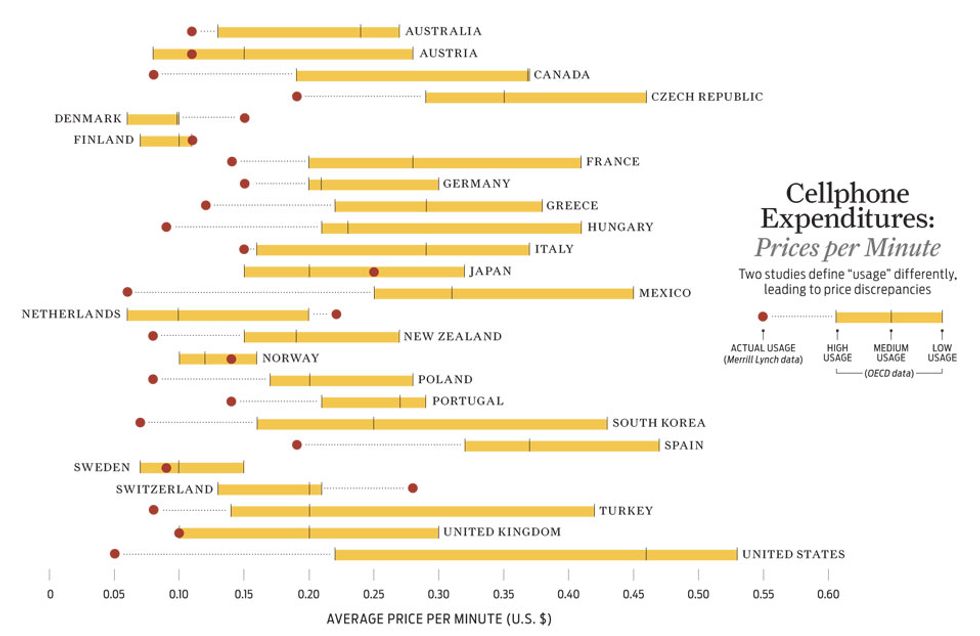According to the Organisation for Economic Co-operation and Development (OECD), the price of wireless phone service is lower in the Netherlands than in any other developed country, and it’s highest of all in the United States. However, Merrill Lynch & Co. recently issued a ranking order that’s nearly the reverse, placing the U.S. price second from the bottom (only Hong Kong’s, not shown, was lower) and the Netherlands price near the top.
How can both of these studies be true? It is a classic example of comparing apples to oranges—in this case, multidimensional apples and oranges. By choosing the dimensions for comparison carefully, you can reach almost any conclusion you want.
The OECD computes the price for three fixed baskets of service. The ”high use” basket includes 246 minutes of calls per month and 55 text messages. But by American standards, this is low use. The average American wireless user talks for 830 minutes a month and sends about 400 text messages. Why? For one thing, most cellular pricing in the United States is like much other U.S. pricing—you can get a lot more minutes for just a few dollars more, just as you can get a much bigger drink at McDonald’s for a few cents more.
George Ford, chief economist at the Phoenix Center for Advanced Legal & Economic Public Policy Studies, in Washington, D.C., says that telecommunications companies are simply doing what economic theory says they should: responding to market conditions in their own countries. ”American consumers are better off with the price structure in the United States, and Dutch consumers are better off with the pricing structure in the Netherlands,” he says. Any study that condenses the complex wireless market into a single ”average price” paid by an ”average user” is bound to misrepresent the actual diversity of user behaviors and plans that are tailored to those behaviors.

